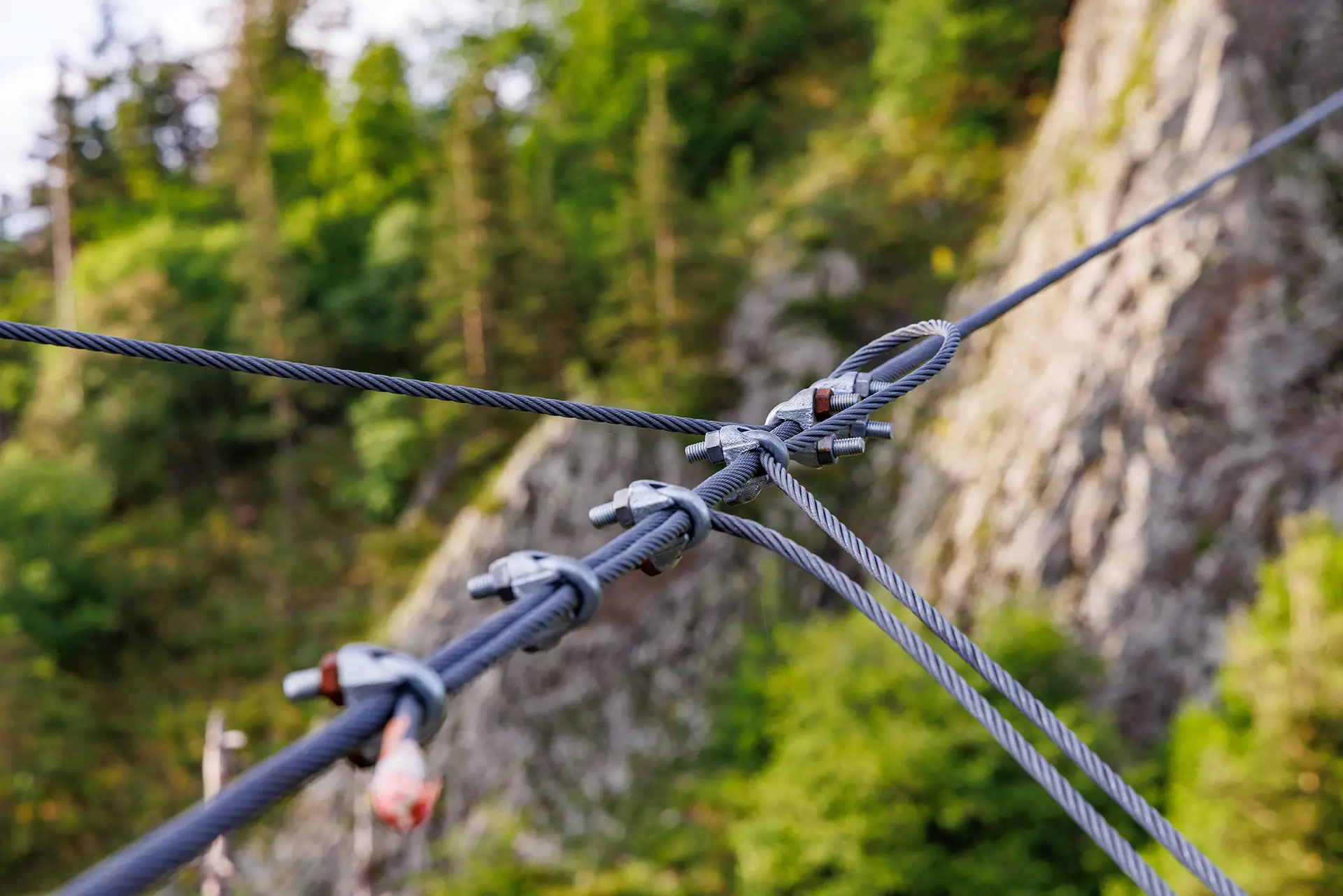Tree Cabling & Bracing Services
in Atlanta, Alpharetta, Roswell & Nearby Areas
Tree Services
How Tree Cabling Works
Tree cabling serves as a preventative measure to mitigate the risk of branch failure, which could otherwise lead to property damage or injury. It's important to note that tree cabling should only be carried out by trained and certified professionals who understand each tree species' unique needs and can accurately assess the tree's structural integrity.
As certified arborists with decades of experience in the tree care industry, we bring advanced cabling and bracing techniques to properties in and around the Roswell area. Call Caldwell Tree Care today to schedule cabling for one of your trees.
Assessment
A certified arborist or tree care professional assesses the tree's structure to identify any weak or potentially hazardous branches. This assessment includes evaluating the tree's overall health, branch angles, attachment points, and potential points of stress.
Installation
Based on the assessment, the arborist determines where to install the cables and braces. Cables are typically installed higher up in the canopy, connecting two or more limbs together to share the load and reduce the risk of splitting.
Cable Types
Different types of cables are used depending on the situation. Static cables are non-adjustable and are installed to provide direct support. Dynamic cables have a degree of flexibility and allow the tree to move naturally in the wind while still providing support.

What is Tree Cabling?
Tree cabling is an arboricultural technique used to provide structural support to trees that may have weak or compromised limbs or branches.
This technique involves the installation of cables and/or braces within a tree's canopy to help reduce the risk of branch failure, improve stability, and prolong the tree's overall health and longevity.
Tree cabling is typically employed when a tree's structural integrity is compromised due to heavy foliage, weak attachment points, or storm damage.
Cables
Braces
Braces, like cables, are installed in the crown, but braces are rigid and installed through the trunk sections that need to be stabilized.
Guys
Guys are used to stabilize trees — usually when newly planted. These helpers need to eventually be removed, or they can damage the tree as it grows around the wires.
Props
This type of support is actually between the ground and the tree. These help to support a branch or tree from below. (These are seen often in the older Live Oaks.)
How Do Trees Benefit From Cabling?
Preventing Accidents
Tree cabling prevents accidents by stabilizing structural weaknesses. When a professional arborist from our team installs a cabling system, the weight of the branches becomes more evenly distributed across the tree’s structure. This support system helps lower the risk of branch breakage, which is particularly helpful for trees growing in high-traffic areas or near buildings.
Read More >>
Protecting the Tree
During storms, tree cabling and bracing protects the tree by absorbing some of the kinetic energy produced by high winds. Installing tree cables creates a dynamic support system that allows the tree to sway while maintaining its structural integrity. This adaptation prevents major damage during severe weather and preserves the tree's health.
Supportive Growth
Cabling and bracing help correct poor branch form and promote more desirable tree growth. By supporting weaker branches and limiting their movement, this technique allows a tree to allocate more resources towards growth rather than staying stable. Over time, this method facilitates a stronger, more resilient tree structure that encourages balanced growth and development.
A Potential Alternative to Removal
Tree cabling and bracing can sometimes serve as an alternative to the removal of at-risk trees. Rather than cutting down a tree that has grown into a problematic shape or location, a cabling system can provide the necessary support to manage the risk.
This approach not only preserves the tree but also maintains the aesthetic benefits it offers to the surrounding area. Additionally, bracing can be particularly helpful for supporting an old or historic tree that you do not wish to tear down.
